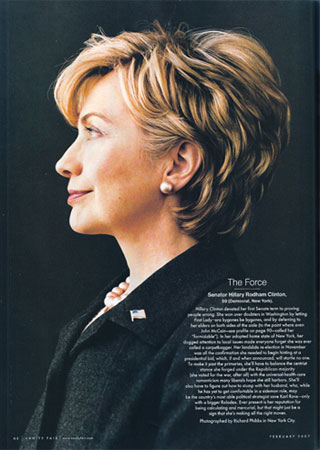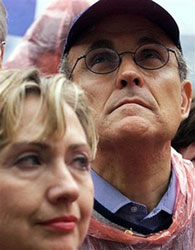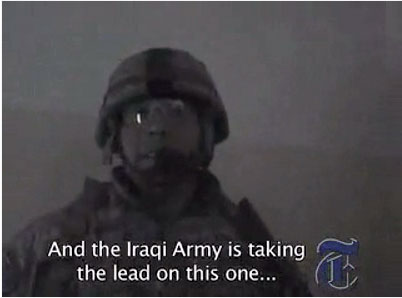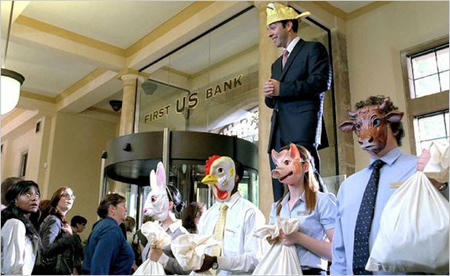Notes
The Hillary Code

In the 2004 Presidential campaign, The BAG spent a good deal of time tracking and detailing the visual stereotyping of John Kerry.
In ’04, it was typical to see Kerry depicted mostly alone (even in a crowded room), looking introspective or sad (again, even in a crowded room), and often reduced in scale in some way. (For the most recent example, look how The Times went “2-for-3” yesterday in this visual and verbal thrashing of Kerry after he decided not to run again.)
Ramping up for ’08, Hillary Clinton enters the contest already branded with a negatively-coded visual. The device involves her profile.
Besides the full page portrait (above) that appears in the latest Vanity Fair, take a look at these covers from two attack books, one by Tyrell and the other by Troy. (Also included is Michael Tomasky’s cover, far right. His book, chronicling Hillary’s Senate victory, is recognized as a positive portrayal, but still paints Clinton as enigmatic.)



Here’s the danger for Mrs. Clinton.
The profile has the capacity to reinforce Hillary as two-dimensional, as more object than person. It can convey that she’s more concerned with where she’s going than what she’s doing. It can cue for detachment — that she isn’t that interested in face time with others, including you and me. And it can float the suggestion that she’s got a hidden side and an inside, duplicitous agenda.
Of course, a profile isn’t automatically negative, just as this Vanity Fair shot is not inelegant. Where the problem arises, however, is when the angle or view becomes stereotypical, associated with doubts or criticisms about the candidate, and then replicated over and over by the visual press.
In Kerry’s case, for example, his consistent portrayal as isolated or split, formed a caricature. Sure, Kerry may be less gregarious or single-minded than other politicians, but after repeated visual depiction a certain way — paired with the media’s descriptive stereotypes and the opposition’s verbal tags (such as “flip-flopper” or “unfit for command”), what gets built is a damaged portrait. In contrast to a political cartoon, however, where the exaggeration is obvious, people don’t tend to read political photos — not consciously, at least — as being overly accentuated or stereotypical.
Because there are profiles and there are profiles, I was interested in VF‘s last line above. It reads:
“Ever present is her reputation for being calculating and mercurial, but that might just be a sign that she’s making all the right moves.”

Of course, it’s incredibly early, with hardly a sense there’s a race on. Let’s come back in six months, however. Then we’ll check for reverberations in the increasingly common HRC side view.
(New ending added: 12:26 pm EST)
(image 1: Richard Phibbs. New York. Vanity Fair. February 2007. p.64. image 2: Mike Albans/A.P. File photo on January 2007 newswire. photographed: September 20, 2001. via YahooNews.com)


Reactions
Comments Powered by Disqus